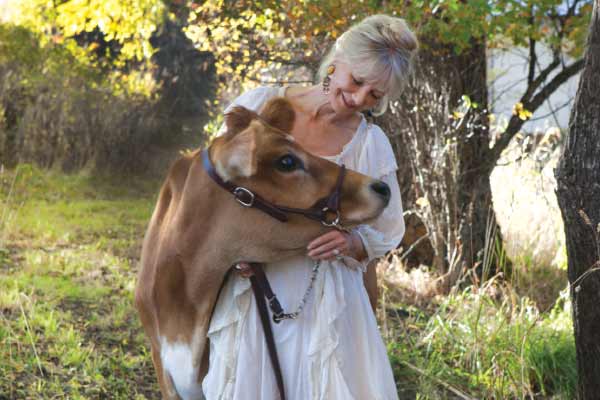When my father’s family of seven lost their Utah farm during the Great Depression, his need to live close to the land stayed with him even though he spent his entire adult life working in the same can factory that gave his father employment.
Likewise, I’d learned from him that when you grow your own food, wild becomes your neighbor, leaning over the fence, day in and day out, to say hello. Early on, I knew that eventually, I would choose an agrarian lifestyle. If a city parcel was my lot in life, like it had been for my father, so be it. I would garden (growing extra for others), keep bees, and plant fruit trees, just like my parents had.
After looking for land for 10 years on and off, I responded to a newspaper ad in 1985 for a remote, five-acre homestead and farmhouse at the base of Paradise Ridge outside Moscow, Idaho. I purchased the land for $45,000, most of the down payment I needed paid for using the cash I’d kept in an old coffee can that, in one house I’d lived in, I’d lowered by rope down a coal chute.
When I told my father in 1997 that the people who’d been coming to my farm as apprentices would be officially enrolled in my new non-profit enterprise called Pay Dirt Farm School, he said, “Gyad, now there’s a clever idea.” To the many dozens who attended over the years, I always told them, “If being handy wasn’t part of your upbringing, pay it no mind. It’s your hands that are itching to get started.” Teaching them everything from how to milk a cow (to this day, I still milk cows every day), to welding, to fruit tree pruning and grafting, to construction, I was able to continue growing what my father had sown.

In the late summer of 1997, I had the opportunity to apprentice at MaryJane’s Pay Dirt Farm School. Those three months transformed my life. I learned about cover cropping, compost, crop diversity, rotations, diseases, good bugs and bad. I learned how to make plum applesauce, crunchy sauerkraut, and all sorts of good stuff using the produce grown on her land. I ground buckwheat into flour, hung laundry outdoors for the first time, did some light carpentry and painting, and chopped firewood.
After leaving the farm, I continued to learn about farming and food systems. I managed a natural-foods store, apprenticed on four more organic farms, worked in Central America with subsistence farmers, and went on to study international agriculture development for my master’s degree. Presently, I’m managing a 200-acre training and demonstration farm in California for a nonprofit organization that trains low-income farmers to farm sustainably and profitably, enabling them to strike out on their own rather than continue as low-paid wage earners. I’m also leasing five acres of land with my husband and raising pastured chickens, a business that is taking off for us. I have nothing but fondness for MaryJane, her husband, their children, and other apprentices in the Pay Dirt program.
–Becky Thistlethwaite
“There are beautiful wild forces within us.”
–Saint Frances Assisi